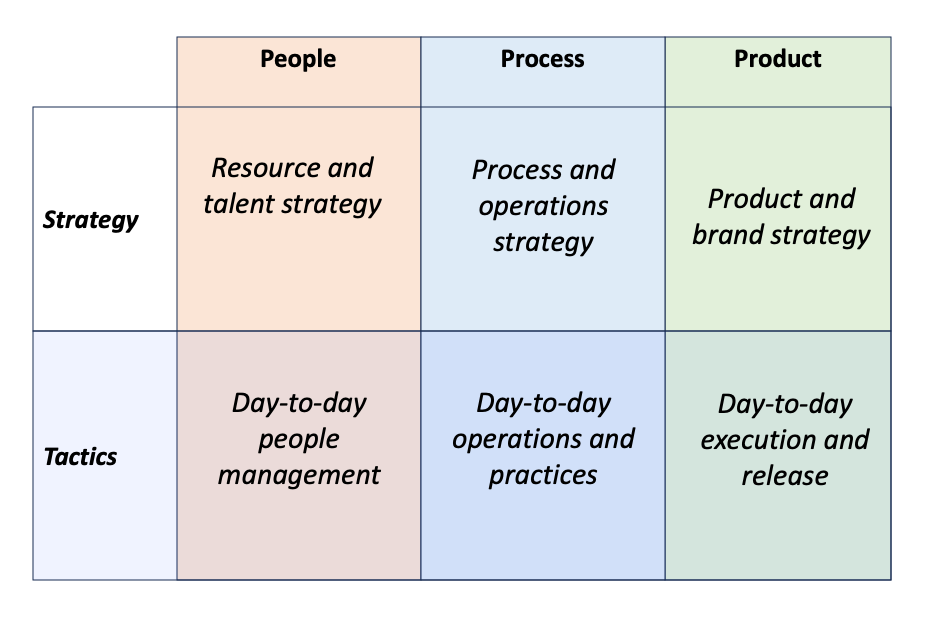Discover a groundbreaking framework, the ‘Mind Box,’ designed to streamline your role, boost productivity, and elevate your leadership prowess to unprecedented heights.
Leadership isn’t a cookie-cutter role. Each leader comes with a distinct style, background, and approach, making the leadership landscape diverse. Adding to this complexity are the various levels of leadership: frontline managers, middle managers, or senior executives. Navigating this intricate web might seem daunting, especially when prioritizing tasks. Let’s unravel a straightforward “Mind Box” framework designed to streamline and optimize your time, extracting maximum value from your role.
The Three Pillars of Leadership
Irrespective of your position, department, or industry, three overarching elements shape your leadership role: People, Process, and Product.
People
People are the lifeblood of any organization. Without them, the organization is a mere shell.
“Alone we can do so little; together we can do so much.” — Helen Keller.
As a leader, your focus should encompass the individuals within and outside your organization. It’s about cultivating an environment where trust thrives while ensuring optimal productivity aligns with your business objectives. You’ll often wear multiple hats—acting as a coach, mentor, problem solver, or taskmaster as the situation demands.
Key Queries for People Leaders:
- How can I foster an environment of trust and belonging?
- What resources can empower my teams to give their best?
- What avenues for growth and development can I provide?
- How do I reward and recognize high-performing individuals?
Process
Understanding an organization’s functioning involves scrutinizing its processes—a sort of ‘X-Ray’ into its internal mechanisms.
“Efficiency is doing things right; effectiveness is doing the right things.” — Peter Drucker.
Your role straddles efficiency and effectiveness in tandem. It entails ensuring optimal operations, resource allocation, and team goal clarity. Guiding them through varied paths towards business objectives is part of your core responsibility.
Vital Queries for Process Leaders:
- Are we leveraging resources optimally?
- Do teams understand their mission aligned with business value?
- Are we tangled in red tape hindering efficiency?
- Do we have tools to monitor performance and efficiency?
Product
For any business, the ultimate goal is delivering customers an outstanding product, service, or platform.
“Your brand is formed primarily, not by what your company says about itself, but what the company does.” — Jeff Bezos.
Constantly innovating and offering value that addresses customers’ needs is your priority. This requires understanding customer expectations, being vigilant about market dynamics, and staying competitive.
Critical Interrogations for Product Leaders:
- Who are our primary customers, and what do they seek?
- How can we deliver value faster and retain customer loyalty?
- What strategies can outperform the competition?
The Dual Leadership Layers
Now that we reviewed the 3Ps — or the three verticals — of leadership, let’s look at the two (horizontal) layers of leadership. On a horizontal scale, leadership operates within two layers: Strategy and Tactics.
Strategy
Often overlooked, strategic thinking is crucial. It involves plotting the course forward, envisioning long-term goals, and understanding your team’s dynamics regarding future opportunities and threats.
Essential Questions for Strategic Leaders:
- What’s the roadmap for the coming years?
- How can we bolster organizational efficiency?
- What innovative steps prepare us for future advancements?
Tactics
Getting the job done is the crux of your leadership role. It’s about today’s execution and overseeing your team’s progress.
Key Queries for Tactical Leaders:
- What are today’s priorities?
- Are there immediate decisions needed to aid the team?
- How can I resolve team conflicts or issues?
Uniting the Mind Box Framework
Step 1: Time Allocation
Decide how you split your time among these six boxes, driven by your goals and priorities. For example, 70% is for strategy, and 30% is for tactics.
Step 2: Calendar Alignment
Match your calendar and tasks to this allocation. Consider using color codes to visualize where your time is invested.
Step 3: Regular Reassessment
Periodically review your time allocation. Roles evolve, and priorities shift, so flexibility and constant evaluation are essential.
The Mind Box framework is a structured approach empowering leaders to optimize their time and amplify their impact. Whether it’s People, Process, or Product within Strategy or Tactics, deliberate time investment is your pathway to leadership excellence.



